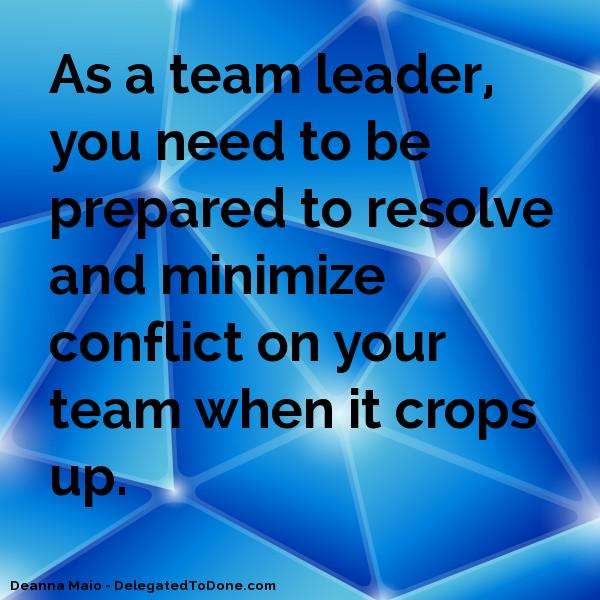With any group project, there will inevitably be some form of conflict among the team members. As a team leader, you need to be prepared to resolve and minimize these differences when they crop up.
Conflict resolution includes the standard approach of what steps you normally take to encourage people to work towards an agreeable solution. And an escalation procedure of the steps you will take when the members can’t resolve any differences.
Conflicts can arise for a variety of reasons. Professional or interpersonal conflicts of team members are common. Technical glitches or even administrative issues can also be a factor. The best way to minimize any negative conflicts is by stopping them before they happen. Encourage team members to learn these skills to prevent conflicts as much as possible.
Encourage your team members to take part in the development phase of the project.
Make sure you get any commitments and expectations from you and your team members down in writing.
Monitor work in progress frequently so you can identify and resolve any small conflicts before they become huge issues. This can include holding regular, scheduled status meetings with your team. Get updates on the project as well as any concerns.
Have a clear line of communication open. Team members should articulate their ideas clearly. Communicate clearly and openly about priorities and goals of the project.
Everyone should be active listeners. They should be encouraged to ask questions, clarify or paraphrase what they don’t understand.
The team leader should be available to team members so the members can express their issues immediately.
Encourage team members to keep conflicts professional. They should stick to facts and issues not each other’s personalities.
Encourage different points of view and have honesty when expressing views.
Have team members focus on actionable solutions when they do have conflicts.
As the team leader or project manager, you need to be proactive and forward thinking so you can anticipate possible problems before they arise.
Before you assign members to your team for the project, soft train them in human relations. Explain your basic communication principles. Arrange for any team-building exercises for everyone involved if possible.
Keep it clear that all team members have access to team leaders, management and supervisors. They should know that their opinions and perspectives are of value to all in the business.
Encourage mutual respect among all members of your team as well as those they are working for.
If conflict does erupt among the team:
Listen to all parties and all sides of the story. Look at body language, tone of voice and the demeanor of everyone involved.
Acknowledge the issue and their concerns by saying something like “I understand you’re angry.” It doesn’t necessarily mean you agree with them.
Take proactive action. Deal with the problem quickly even it raises more conflict. Make it clear the ultimate goal is a successful project.
As the team leader or manager of a project or group you need to be prepared for conflicts to happen at any time. Every business has some form of conflict among their employees. The main thing is to take steps to minimize as much as you can before it happens.

